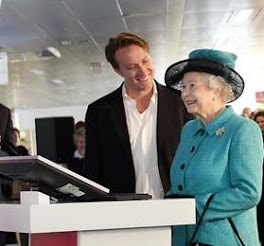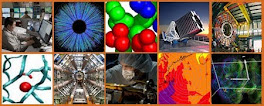1. The admittedly provisional radiocarbon dating says the TS
is 13th/14th century, so, leaving aside the increasingly desperate attempts on the part of diehard defenders of 1st century authenticity to discredit the (admittedly preliminary single-shot) data from 1988, that makes the TS approx 700 years old - way, way more youthful than 2000.
2.While it’s anyone’s guess at the original reason for
creating the Shroud with the appearance of a ‘scorched-on’ double image, it quickly began
to be seen and promoted as a giant life-size version of another crowd-drawing
icon, or maybe holy ‘relic’ – the fabled Veil of Veronica, the latter allegedly and no doubt fancifully bearing a
sweat imprint of the face of Jesus, captured by a lady bystander as Jesus bore his cross.
3. When in 1357 the
TS was first displayed in the tiny French village of Lirey attracting not only
hordes of pilgrims but profound misgivings on the part of the Church, it was
intended to be seen as a sweat imprint on a burial shroud; to help promote that
belief an inset image of the Veil of Veronica was added to the Lirey Pilgrim's badge
(essentially a tourist souvenir) above the word “suaire”, the latter with
connotations of “sweat”.
4. 250 years later, the founder of the Salesian order, now
known as St.Francis de Sales, writing to
his mum from Annecy of his visit to Turin to pay homage to the Shroud, used
the word “sweat”, referring to his own and that of Jesus, no less than 7 times*,
but you would never know from current “shroudiie” literature that the TS was
originally viewed essentially as an image formed simply with sweat, at least initially
5. If one accepts the radiocarbon dating, and the view that
the TS was perceived and promoted as an image formed in sweat, then the
negative character of the TS image immediately makes sense, being an imprint
that after ageing and yellowing would have captured only the most prominent
features of a face and body, those that would intercept and reflect most light
in modern-day photographic “positive”.
 |
| Some sweat imprints have an amazing ability to morph spontaneously over time into photograph-like positives, but not so the Shroud of Turin. (Francisco de Zurbara, the Veil of Veronica). |
6. So the TS image is not, and never was intended to be
viewed as one would a painting or a modern photograph, but as a sweat imprint
of the recently-deceased founder of Christianity, an image that trumped the
crowd-drawing Veil of Veronica’s image, similarly captured it was suggested by a similar
sweat-imprinting mechanism a day or two earlier on the road to Calvary.
7. In asking how a medieval artist, or merely artisan, would
have set out to manufacture a fake burial shroud with an entire body sweat
imprint of both sides of a body, one has to consider a gamut of possible
art-and-craft techniques and technologies, ranging from simulated sweat, possibly some kind of acidic paste, (e.g. acting
in a Luigi Garlaschelli-proposed mechanism) on and discolouring linen to leave a negative image or (more audaciously) a
shortcut method that used a heated metal template to produce a faint surface
scorch that could be passed off as ancient sweat.
 |
| I and my helpers are continuing to experiment with whole-body imprinting, using pigment as a more user-friendly substitute for thermal energy. |
8. A variety of evidence suggests that the TS image WAS
produced by imprinting off a template in a manner that left a negative image,
as distinct from being produced freehand, with a particular detail - the peculiar crossed
hands - providing the most compelling evidence , i.e. the seemingly bony fingers and
lack of thumbs, both of which are easily modelled used real live hands and any
imprinting medium, even Nutella spread.
9. The STURP team could find no evidence that the TS image
was painted, based on the absence of known pigments (with one dissenting voice,
that of the ‘maverick' hastily-dumped Walter McCrone) and was forced to assume
that the TS image was some kind of degradation of the surface fibres, or
coating substance, of the linen, approximating in chemical constitution to
dehydrated carbohydrates, and thus not dissimilar to a heat scorch.
10. A sensible working hypothesis is that the TS image was
produced by some kind of thermal, or maybe thermochemical process that captured
the image off a 3D template (a bronze statue or bas relief, or combination of
the two? ) that left a negative image with 3D-enhancible properties on the linen,
one that was seen originally as a sweat imprint, with none of today’s wild
too-clever-by-half theorizing about miraculous flashes of
radiation (miraculous not just for emanating spontaneously from the mortal remains of a bloodied victim of crucifixion, or so goes the narrative, but also for imprinting across air gaps between cloth and
body) or less aesthetic models based on migration of chemically-reactive putrefaction products.
(Sorry about the length of some of my sentences, but I
only cheated once with that semi-colon in No.3.). I’ll be back later to add
references, and maybe a few images. For now, I want folk to be absolutely clear
as to where this sceptic is at, since the style of my blogging as a real-time
research project may have caused misunderstanding to creep in. Yesterday was a
case in point, when it became obvious that my Nutella experiment reported here just 3 days ago was viewed as a
move away from thermal imprinting towards some kind of pigment-based one. No so –
the Nutella was simply a means of quickly showing the kind of imprint that
would have been left by the hands of a heated life-sized bronze crucifix had
they been pressed down into linen. This blogger/retired biomedical scientist
still believes that the TS image is essentially a thermal imprint, though that
does not preclude the possibility of some chemical assistance, e.g. the
invisible ink effect that can be achieved at low temperature with, say, lemon
juice, the subject of a much earlier posting. Btw - I have omitted non-essential detail. notably a possible Templar connection that might have produced a Mark 1 TS to represent a slow-roasted Jacques de Molay. That image could have been re-invented as an image of the crucified Jesus by judicious addition of blood in all the biblically-correct places, but I have not rejected the possibility that the TS image was made-to-order to represent Jesus with no Templar connection).
Whilst waiting to see you, my very dear Mother, my soul greets yours with a thousand greetings. May God fill your whole soul with the life and death of His Son Our Lord! At about this time, a year ago, I was in Turin, and, while pointing out the Holy Shroud among such a great crowd of people, a few drops of sweat fell from my face on to this Holy Shroud itself. Whereupon, our heart made this wish: May it please You, Saviour of my life, to mingle my unworthy sweat with Yours, and let my blood, my life, my affections merge with the merits of Your sacred sweat! My very dear Mother, the Prince Cardinal was
somewhat annoyed that my sweat dripped onto the Holy Shroud of my Saviour; but it came to my heart to tell him that Our Lord was not so delicate, and that He only shed His sweat and His blood for them to be mingled with ours, in order to give us the price of eternal life. And so, may our sighs be joined with His, so that they may ascend in an odour of sweetness before the Eternal Father.
But what am I going to recall? I saw that when my brothers were ill in their childhood, my mother would make them sleep in a shirt of my father’s, saying that the sweat of fathers was salutary for children. Oh, may our heart sleep, on this holy day, in the Shroud of our divine Father, wrapped in His sweat and in His blood; and there may it be, as if at the very death of this divine Saviour, buried in the sepulchre, with a constant resolution to remain always dead to itself until it rises again to eternal glory. We are buried, says the Apostle, with Jesus Christ in death here below, so that we may no more live according to the old life, but according to the new. Amen.
Francis, Bishop of Geneva
The 4th of May 1614
That's St.Francis de Sales, about whom I may have a few more words to say in connection with the announcement from the Turin custodians of a surprisingly-long public/private exhibition of the Shroud scheduled for 2015, the sketchy details of which, to say nothing of an intriguing subtext re a "hoped-for" visit from the new Pope have raised some eyebrows, this blogger's included.
Francis de Sales (from wiki)
"There he made up his mind about becoming a priest. Intelligent and handsome, he went through various conversion experiences that moved his heart to serve God rather than money or the world. In one incident, he rode a horse, and his sword fell to the ground and crossed another sword, making the sign of the Christian cross. He interpreted this and other signs as a call from Jesus Christ to a life of sacrifice and self-giving love for the Church".
So what would our Francis have done with his life, one wonders, had the two swords formed an equally probable L, T or V? L for licentiousness? T for timewasting? V for vagabondage? The possibilities were endless, at least in the English language.
Update: 10:40 still 19 July
I have added some images, as flagged up earlier. This might be a uitable opportunity to repsond briefly to some critical comment from Thibault Heimburger recently. I'm still waiting for a response to my considered reply, and have not forgotten that he is requesting a full critique of the second of his anti-scorch pdfs.
Well, it's for me to order my own priorities, and previous attempts to criticize his work, especially on what I regard as unsuitable methodology leading to false conclusions, have drawn a blank. however, i cannot let pass his claim that it is only intense scorches that are 3D-enhancible.
Here are some cut-and-paste images form his pdf2 that he provides by way of evidence:
 | ||||
| That's his lighter scorch on the left, heavier on the right, from a heated metal template (see below) |
Having said that, there's a much better chance of obtaining a realistic life-like result, starting with a contact imprint ("impactograph") off a reasonably accurate 3D template (whether obtained in life, or death, or, in the case of my preferred thermal imprinting, off a metal effigy) than from a painting. I say that for the benefit of those who still consider the TS to be some kind of painting, including those ingenious albeit heavily qualified models that imagine the paint has flaked off with age leaving some kind of ghost image on the linen.
Update Sun 20th July
Here's a response I have just made to a comment from kiwi "daveb" on shroudstory.com.
July 20, 2014 at 3:50 am
Thanks too for your detailed reply to my detailed reply, daveb,
even if I profoundly disagree with most of its contentions. As before,
it’s not possible to respond to all points. Let’s focus on the most
crucial aspect, namely that “permissible” 3-4 cm air gap, routinely
conjured up, at least on the internet, like a Hogwarts magical spell (or
missile-deflecting force field if your prefer Star Wars to Harry
Potter).
At least you agree that there’s a non-imaged zone around the hands (Giulio Fanti please note) but then you qualify that by saying, in effect “Ah, but it’s not very wide, and there’s still some belly visible”.
In my book, not written by J.K.Rowling, if there’s no contact, then there’s no imaging. That’s the uncompromising contact model of image-imprinting, the one I am defending against proposed (or more generally assumed) magical mystery radiation-imaging.
Note the self-denying ordinance. Defending the contact-image model requires far greater self-discipline than the oh-so-malleable radiation model, one that self-indulgently allows imaging in expected non-contact zones provided the air gaps don’t exceed the generously-provisioned 3-4 cm air gap.
OK, so that forces me to confine attention to locations where any air gap is expected to be less than the pseudo-scientific 3-4cm fudge factor. But if one sees failure to image, no matter how restricted the zone, then that’s it for the radiationist school of thought, correction, fantasizing. Puff of white smoke – gone. Poetic justice, some might think.
There is indeed just such a location (shame there aren’t more). What’s more it’s plain for all to see on those crossed hands. Look carefully at the region where the edge of the more visible upper hand overlaps the hand it covers..
I’ll add a labelled photograph to my site, then copy-and-paste its location here in a comment to follow later, maybe not till later in the day (social engagements).
Prepare to be put on the spot, all you shameless proponents of radiation modelling who through deploying your magical 3-4 cm smokescreen have got away with mystery-mongering for far too long, bringing science and scientists into disrepute.
At least you agree that there’s a non-imaged zone around the hands (Giulio Fanti please note) but then you qualify that by saying, in effect “Ah, but it’s not very wide, and there’s still some belly visible”.
In my book, not written by J.K.Rowling, if there’s no contact, then there’s no imaging. That’s the uncompromising contact model of image-imprinting, the one I am defending against proposed (or more generally assumed) magical mystery radiation-imaging.
Note the self-denying ordinance. Defending the contact-image model requires far greater self-discipline than the oh-so-malleable radiation model, one that self-indulgently allows imaging in expected non-contact zones provided the air gaps don’t exceed the generously-provisioned 3-4 cm air gap.
OK, so that forces me to confine attention to locations where any air gap is expected to be less than the pseudo-scientific 3-4cm fudge factor. But if one sees failure to image, no matter how restricted the zone, then that’s it for the radiationist school of thought, correction, fantasizing. Puff of white smoke – gone. Poetic justice, some might think.
There is indeed just such a location (shame there aren’t more). What’s more it’s plain for all to see on those crossed hands. Look carefully at the region where the edge of the more visible upper hand overlaps the hand it covers..
I’ll add a labelled photograph to my site, then copy-and-paste its location here in a comment to follow later, maybe not till later in the day (social engagements).
Prepare to be put on the spot, all you shameless proponents of radiation modelling who through deploying your magical 3-4 cm smokescreen have got away with mystery-mongering for far too long, bringing science and scientists into disrepute.
Here's the crucial graphic, showing a non-imaged zone in the angle between the two crossed hands (yellow rectangle), exactly as expected in a contact-imaging model.


























No comments:
Post a Comment